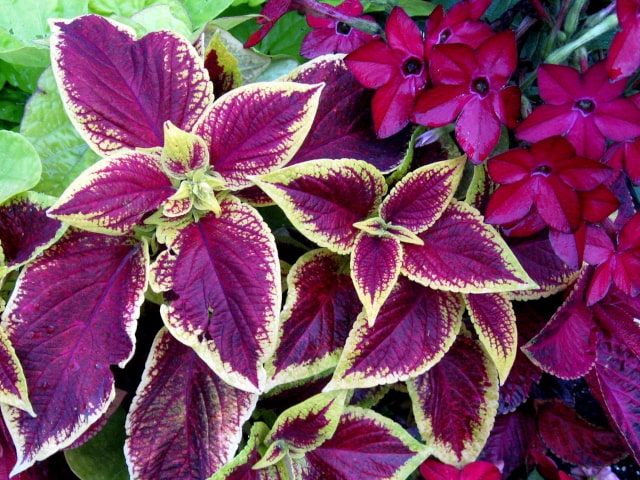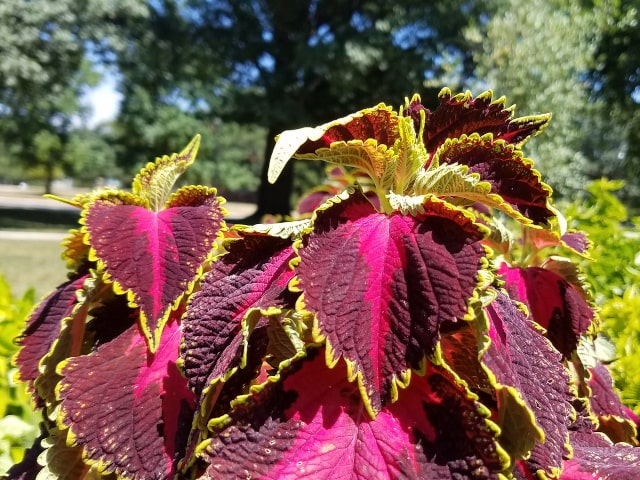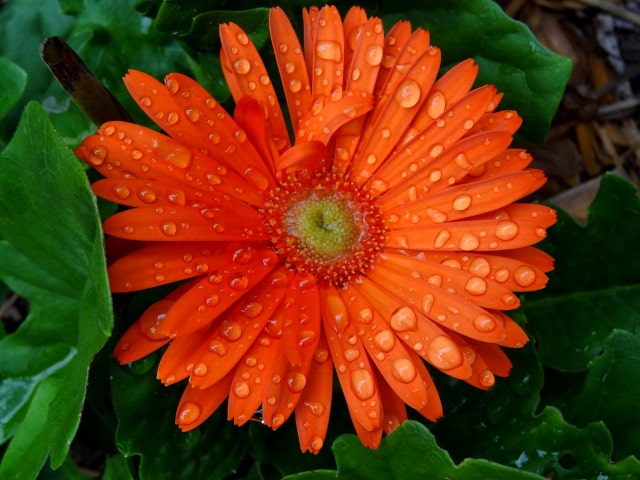
Coleus is a very versatile plant. It can be enjoyed all year round. If kept indoors, it can be used for foliage arrangements. It is known for its beautiful, colorful foliage that can be used for bouquets.
Coleus plants are very diverse. They come in numerous leaf patterns and color combinations: there are green marked with ivory, apricot, ocher, brown, pink, red or purple. Most coleus plants have two-tone borders or speckles but there are also a few solid-colored ones.
Small coleus plants can make beautiful edging plants, as long as you keep them pruned low. Larger ones look very interesting when used in geometric designs or when they are scattered in groups in the perennial border. You may also use them in terrace boxes or patio planters. It's easy to combine them with petunias or other annuals. You may also combine them with other foliage plants, such as ferns or philodendron. It's even possible to grow coleus into a tree.
Climate Conditions and Required Care
You may grow your coleus in sun or shade, but it will depend on your climate. In case you live in a cool, humid area, it's best to place it in full sun. It will bring out the best coloring and will make the plant strong. On the contrary, if you live in a hot, dry area, place your coleus partially in shade. The plant thrives at temperatures above 70 degrees F.
You should provide a lot of water but make sure that the roots stand in soggy soil. You should never allow your coleus to sit in water because it can make his roots rot. If you keep it in a pot or another container, make sure there is a proper drainage. If kept outdoors, it should be watered about as often as garden annuals. You will usually be able to tell if your coleus receives enough water by its leaves: if the plant is dry, the leaves tend to drop. If the plant receives too much water, the leaves will turn yellow.
For the best growth, it's important to apply some fertilizer. Cow manure works wonders, but you may also use a chemical fertilizer high in nitrogen. These plants also love soluble liquid feed. Make sure to follow instructions for feeding annuals or house plants - what works for them will work for your coleus. In case you want to keep your coleus small, give it very little fertilizer and don't forget to pinch the tips.
Common Pests
Coleus plants don't have many pests. Mealybug will sometimes attack it, especially if kept indoors, but it can be prevented with regular showering with cold water. If these pests appear, you can control them with a cotton on a matchstick dipped in alcohol. Before you apply any chemical insecticide, make sure to read the manual: it's important to follow instructions closely so you wont damage the plant.
How to Keep the Colors?
Sometimes, coleus plants start losing their bright colors. For a coleus to retain its bright color it needs to receive plenty of light (some direct sunlight during the day and as much indirect light as possible all the time). It also needs to be kept in a proper temperature (60 degrees F or more). It's best to keep it in rich soil that will promote rapid growth. The best soil for bright and colorful coleus plants is soil rich in loam and sand with a bit of manure.
This will usually ensure that your coleus stays bright and colorful. If the plant has been potted for some time, make sure to introduce regular feeding with fertilizer rich in nitrogen. This will help to keep the color of the leaves bright and strong.
Starting Coleus from Cuttings
It's possible to multiply your coleus plants as much as you want using cuttings. Leaf patterns and color of plants started from cuttings will match those of the original plant. All those 2 to 4 inch tips you prune can be used for starting new plants.
To do it, nip off the lower leaves of the cuttings and cut the base of the stem. Plant the cutting in a growing medium at least one inch deep. Good mediums to use are soil, sand, peat moss, vermiculite, or even water. It's important to keep the medium moist; in case you use water as a medium it's important to keep the water fresh. Don't add any fertilizer. The roots should begin to develop in a few days. You can root these cuttings right in a shaded garden bed during summer.
After a few weeks, take a cutting and gently pull it upward. If it resists the pull, it's a sign that it had a good root system. It means it can be transplanted safely.
Starting Coleus from Seed
You may choose to start your coleus from seed. Plants started from seed typically vary greatly in leaf patterns and colors. Many offerings have very diverse colors. When you start your plants from seed it's possible to select your favorite leaf patterns and colors and use them for propagation with cuttings.
To start coleus from seed, sow seeds indoors at any time or outdoors when temperatures are about 60 or 70 degrees F. There are also handy coleus starting kits you can use to grow new plants. Usually, all you need to do is to add water to start the plant.
If you allow your coleus to bloom you can collect your own seed. Some varieties bloom quickly and others need to grow for the whole season to produce a bud. It's important to know that coleus seed shatter easily. The pods should be removed when they turn slightly yellow.
When you have the seed, plant them in well prepared soil. The pots should be protected from hot sunshine. For planting, use light rich soil but don't over-fertilize. Fill the containers well, so the seedlings won't become stemmy as they try to reach for the light. After you add the soil, make sure it's moist enough. Sprinkle the seed very thinly on the top of the soil. Cover the seed with some of the fine soil you can find.
If the conditions are good, the seed will begin to germinate about five days after planting. The seedlings have a very characteristic appearance and they develop quickly. As soon as they emerge, provide them with enough light. You can even place them in direct sunlight unless it's too hot. Make sure that the soil never dries out. These plants have shallow roots so the soil should be kept moist.
Seedlings should never be crowded. All seedlings should be transplanted as soon as they start to grow properly to prevent crowding. It's easy to repot them at any age, so it shouldn't be the problem. Don't forget to protect the seedlings from heavy rains, high winds and hot sunshine.
Keep in mind that bright foliage colors usually don't develop until the plant reaches some size. However, unique leaf patterns will be apparent as soon as the first true leaf appears.
When the seedlings reach 2 inches in height they should receive the same care as a mature coleus plant.
Photo credit: John




2 Comments
I am new to gardening. I got Coleus seeds online and screwed up planting right off. I went back online and saw you just need to pay the seeds into the soil so my second try has born fruit. I'm in Ocala Florida and it's been hot and the sun is brutal. I flower bed doing well I would love to see some color. My wife always took care of the flowers and she has turned it over to me. I will take pics as soon as the colors come in.
Can coleus be brought inside during winter?